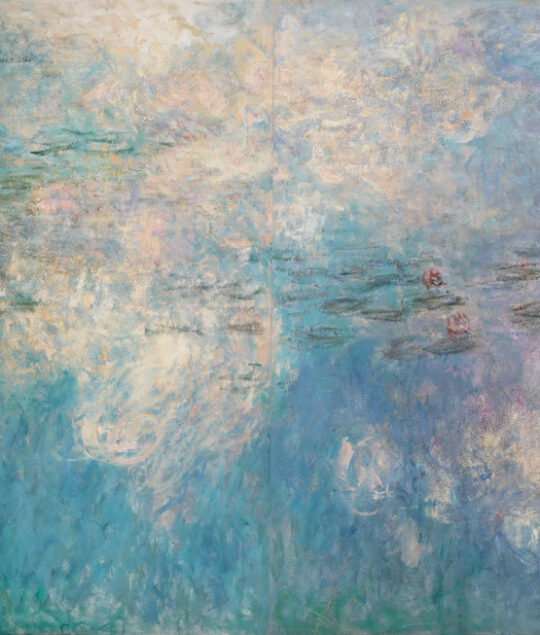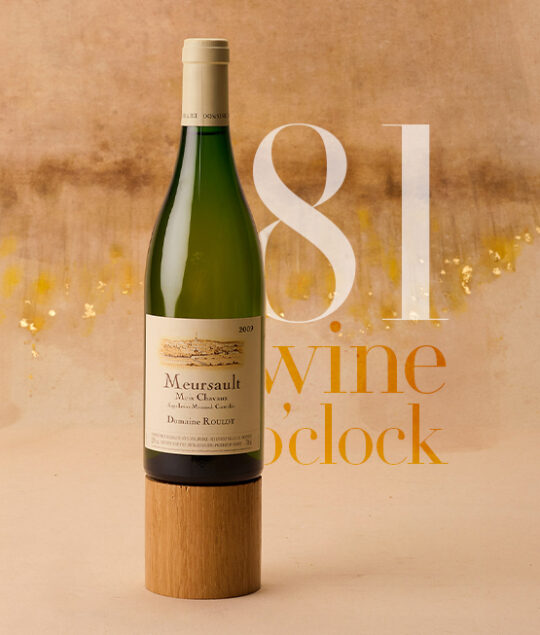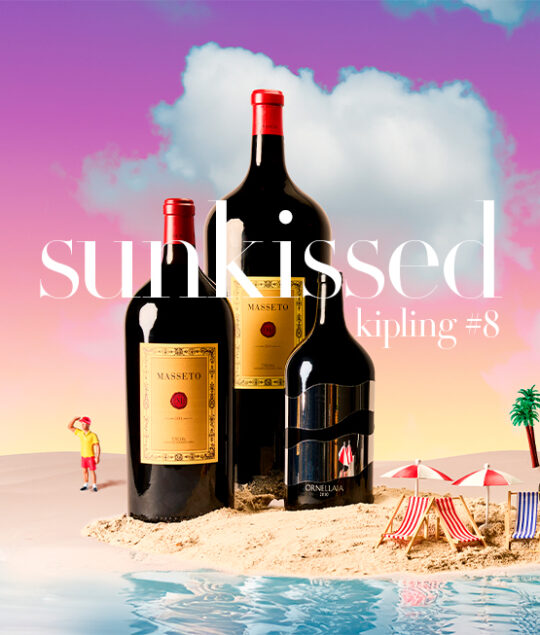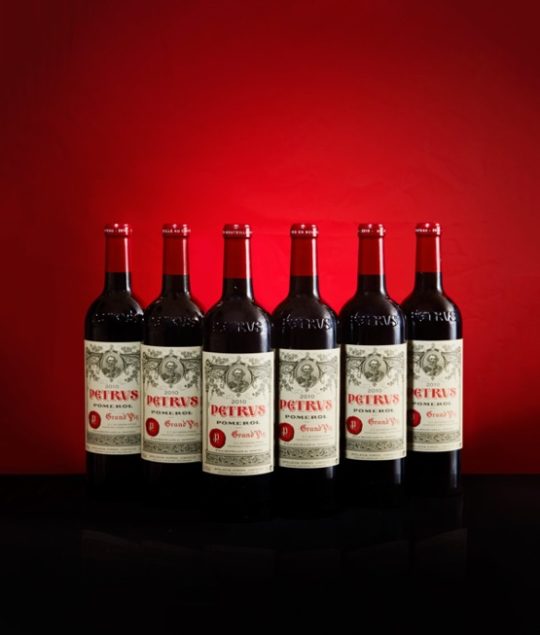
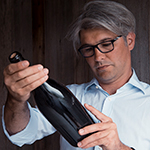
By Michael Ganne
Does Pétrus 2010 reach perfection…? Without contest it is one of the most celebrated wines from Bordeaux and some of the most famous critics gave 100 points to the 2010. Extraordinary, greatest, enormous, a monster… all the superlatives are given to this wine but what is the history of Petrus ?
Pétrus does not have the long history of many of the great Bordeaux wines. The estate property was originally owned by the Arnaud family since the mid 1700s. At that time, the estate was 17 acres. The name Pétrus can be found in records dating back to 1837 and it had already been recognized as a great wine: the famed reference book Cocks & Féret mentions it in 1886 as being one of the finest wines of Pomerol.
In the early 1900s, the Arnaud family offered shares of Pétrus to the public under the Société Civile du Château Pétrus. Madame Edmond Loubat, the owner of a hotel-restaurant in Pomerol as well as of Château Latour in Pomerol, began to buy some of the shares, starting in 1925 until 1949, when she became the sole owner of Petrus. With the end of World War II, 1945 also brought a sensational vintage to Bordeaux and the right bank in particular. Madame Loubat entrusted Jean-Pierre Moueix with the distribution of her wines. It really marks the beginning of the Pétrus story as we know it today. Jean-Pierre Moueix, hailing from the Corrèze region, owned a négociant house in Libourne. In 1945 he acquired the exclusive rights to sell Petrus.
Madame Loubat did much to bring its reputation to the forefront and achieve first growth status for Pétrus. However, it was uncontestedly Jean-Pierre Moueix who made it into one of the greatest wines of Bordeaux. He was a remarkable visionary whose talent and passion did not stop at wine: he was also a renowned collector of contemporary art.
Jean-Pierre Moueix began his activity with Pétrus as its exclusive distributor before buying a share in it from Madame Loubat and gradually acquiring more of it after 1964. Mme. Loubat passed away in 1961, year of one of the greatest vintages ever for Pétrus. The estate was divided between a niece, Lily-Paul Lacoste-Loubat and nephew Monsieur Lignac, with Mouiex being given a share to serve as a tie breaker if needed and to keep his influence for the estate. In 1964 Moueix bought the nephews’ shares. In 1969, the estate was expanded when 5 hectares (12 acres) were purchased from Château Gazin. Jean-François Moueix, elder son of Jean-Pierre achieved full ownership for the Moueix family in 1969. In 1970, Christian Moueix – Jean-Pierre’s younger son – took control of the operations at Pétrus. Today, he and his children, are the owners of Petrus and his son Jean is now pursuing the adventure at the head of Pétrus and Duclot group.
There is another person behind the success of Pétrus, its wine-maker, Jean-Claude Berrouet, hired in 1964 by Jean-Pierre Moueix when he was only 22. An œnologist of genius, but equally a man of culture and a poet, Jean-Claude Berrouet has produced 45 vintages of Petrus and an impressive series of great vintages at Pétrus. He retired in 2008 but remains as a consultant. Since then, his son, Olivier, œnologist and agricultural engineer, continues in his father’s footsteps by upholding the legacy of Pétrus.
There are many different reasons for the exceptional quality and character of Pétrus. Pétrus enjoys a very privileged position – its 11.42 ha are planted at the top of the highest hill of Pomerol, at an altitude of 40 meters, and soil – it is the only vineyard in Pomerol entirely composed of clay soil dated back more than 40 million years whereas surrounding it the plateau has thick gravel dated back no more than 1 million years. This ensures excellent sun exposure and natural water drainage thanks to this specific clay soil: the water molecules penetrate the interlayer molecular spaces and become available to the roots during the dry summer months. This avoids any excess hydric stress to the vines even in the driest years. The average age of the vines is 40 years old. The density varies from 6,600 vines per hectare for the oldest plots to 7,000 on the younger ones for only 30 000 bottles that the entire world cries out for. Since 1985, Pétrus has been producing its own clones in order to preserve vegetal variety when replanting. The grapes grown here are 100% Merlot since the ½ hectare of Cabernet Franc was uprooted after the 2010 harvest.
Each vintage of Pétrus is then the result of this exceptional terroir combined with extreme care all along the process. The grapes are picked by hand, destemmed, and since 2009 an optical sorter has replaced hand sorting. They are gently crushed before vinification in concrete vats. Maceration usually lasts 15 to 21 days to extract only the softest and most mature tannins from the skins and the pits. Half the juice is gently pumped over in the morning and the other half in the evening. After maceration the juice goes into another vat for the malo-lactic fermentation.
The must is lightly pressed and sometimes the press wine is incorporated into the final blend. After the malo-lactic fermentation is complete each vat is tasted and those which are good enough are blended together before the wine is aged in barrels. Only 50% of the French oak barrels are new. When these are received from the coopers they are filled with water for 15 days in order to get rid of the most aggressive tannins. The barrels are closed with a silicon bung from the very start in order to protect the wine from contact with oxygen. There is no ullage. The wines are racked every three months. The aging varies in length from one vintage to another depending on the quality of the grapes. The wines are fined and filtered prior to bottling.
Pétrus is a rich, full wine with a velvety texture and a bouquet of cassis, violet and truffle. Although an opulent wine with dense fruit, it is distinctive by its incredible harmony and exceptional length on the palate. For the best vintages, it is advisable to wait 15 years before tasting the wine, but Petrus can age well for more than fifty years. A few lucky ones will have the chance to taste these Pétrus 2010 in 2060… before that good luck with your bids !!
“ROOSTER YEAR 2017” Wine o’clock
Tuesday 17th January at 2pm
